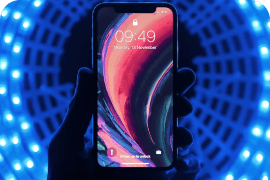travel hacks
Pocket WiFi vs Travel eSIM: Which Is Better?
We lay out the pros and cons of each option.
In an increasingly interconnected world, staying connected while traveling abroad has become a necessity rather than a luxury. Whether it's for business, leisure, or simply to keep in touch with loved ones, having access to the internet is vital. Two popular options for international travelers seeking connectivity are Pocket WiFi and Travel eSIM. In this article, we will explore the pros and cons of each to help you decide which one is the best fit for your next adventure.

Pocket WiFi: Your Portable Connection Hub
Pocket WiFi, also known as a mobile WiFi hotspot or MiFi, is a small, portable device that acts like a router, providing internet connectivity to multiple devices through a cellular data connection. Here are the key advantages and disadvantages of using Pocket WiFi while traveling:
Advantages of Pocket WiFi
- Multiple Device Connectivity: One of the biggest advantages of Pocket WiFi is its ability to connect multiple devices simultaneously, including smartphones, laptops, tablets, and more. This makes it an excellent choice for families or groups of travelers.
- Coverage and Reliability: Pocket WiFi typically offers reliable internet connectivity with good coverage in many countries. It can provide a strong and stable signal even in remote areas.
- No Need to Change SIM Cards: You can keep your regular SIM card in your phone while using Pocket WiFi. This means you can still receive calls and texts on your regular number without interruption.
- Unlimited Data: Pocket WiFi typically comes with unlimited data, so you wouldn't need to worry about using up too much data or incurring unnecessary charges.
Disadvantages of Pocket WiFi
- Extra Device to Carry: Pocket WiFi adds an extra device to your travel gear, and you need to keep it charged. Additionally, it's one more item to worry about potentially losing or damaging.
- Rental or Purchase Costs: You may need to rent or purchase a Pocket WiFi device, which can add to your travel expenses.
- Limited Battery Life: The battery life of Pocket WiFi devices can vary, and you'll need to remember to recharge it regularly. If you use a Pocket WiFi, you will want to ensure that you have spare batteries or a power bank that can charge it up lest it runs out in the middle of the day when you are out and about.
- You Need to Stick Together: For you to be able to get connectivity, you must be in close-enough proximity to the Pocket WiFi. If your group will be splitting up during your travels, those who are not in possession of, or in close proximity to the Pocket WiFi will not be able to stay connected.
Travel eSIM: The Digital Nomad's Dream
An eSIM, short for embedded SIM, is a virtual SIM card that can be installed and activated on eSIM-compatible smartphones, providing access to mobile data networks in foreign countries. Travel eSIM providers sell international data eSIMs, providing travelers with connectivity as they explore the world. Here's a look at the pros and cons of using a Travel eSIM:
Highly rated 4.4/5.0 on Trustpilot
Save up to 50% on roaming
Fast and reliable network
Advantages of a Travel eSIMs
- No Additional Hardware: Travel eSIM eliminates the need for carrying an extra device. You can simply activate it on your existing smartphone, saving space and reducing clutter.
- Convenience and Flexibility: Purchasing and activating a Travel eSIM is typically a straightforward process that can be done online. It's convenient, especially if you're a frequent traveler or digital nomad, as you can easily switch between different eSIM profiles for various countries. As compared to a pocket WiFi, you also do not have to worry about your pocket WiFi running out of battery in the middle of a day-out.
- Cost-Effective: Travel eSIMs can often be more cost-effective than renting a Pocket WiFi device, especially if you are traveling alone, or if you need connectivity for an extended period.
- Variety of options: Many providers of travel eSIMs like Nomad offer various options — you can choose from a regular data plan that is based on data volume; or you can also have the option of getting unlimited data for a specific duration. This gives you flexibility in choosing a plan that is suitable for your travel needs.
Disadvantages of a Travel eSIMs
- Single Device Connectivity: While Travel eSIMs work well for smartphones, they may not be as suitable for travelers who need to connect multiple devices simultaneously. That said, if your data plan allows you to data share, then you can essentially use your phone as a hotspot to let other devices to connect to it.
- Compatibility: Not all smartphones support eSIM functionality, so you'll need a compatible device to use this option. Refer to this list of eSIM-compatible devices to check if your phone supports eSIMs.
So is a Pocket WiFi or eSIM better for me?
Choosing between Pocket WiFi and Travel eSIM ultimately depends on your specific travel needs and preferences. If you require internet connectivity for multiple devices, will be traveling in groups, and are sure you will be sticking together during your trip, Pocket WiFi may be the way to go. On the other hand, if you value convenience, cost-effectiveness, and have a compatible smartphone, a travel eSIM can be an excellent choice for solo travelers or those looking to streamline their travel gear.
Ultimately, the decision should align with your travel habits and objectives, ensuring that you stay connected seamlessly and enjoy your journey to the fullest, no matter where in the world you may be.
Considering other options like getting a local SIM or international roaming instead? Check out our blog post comparing local SIMs, international roaming, and travel eSIMs!
Get a Nomad Travel eSIM
Nomad offers international eSIMs with data plans in over 200 countries, and you can be sure to find one that is suitable for your travel needs. And if you will be traveling across multiple countries, there are also regional plans available so you can stay seamlessly connected as you hop between countries. Data plans are available from as low as $1.50/GB.
How to get a Nomad eSIM?
Getting a Nomad eSIM is very easy. Simply create an account with Nomad, select the plan that you want, and check out! Or, download the iOS or Android app and you can easily purchase and manage your data on the go!
After you purchase your eSIM, you will receive an email containing information on how to install and activate your eSIM. Remember that you will need a stable internet connection to install and activate your eSIM. It is recommended to install your eSIM ahead of time, and activate it right before you fly so that you can start using your data once you arrive at your destination. In some cases, manual activation may not be required, and your eSIM will be automatically activated upon arrival at your destination. Check your email for detailed instructions relating to your purchased plan.
And in the event that you run out of data, don't worry! Some of Nomad's plans come with the option to purchase add-ons. The purchase of add-ons will add more data to your existing eSIM, so you won't need to install a brand-new eSIM.


